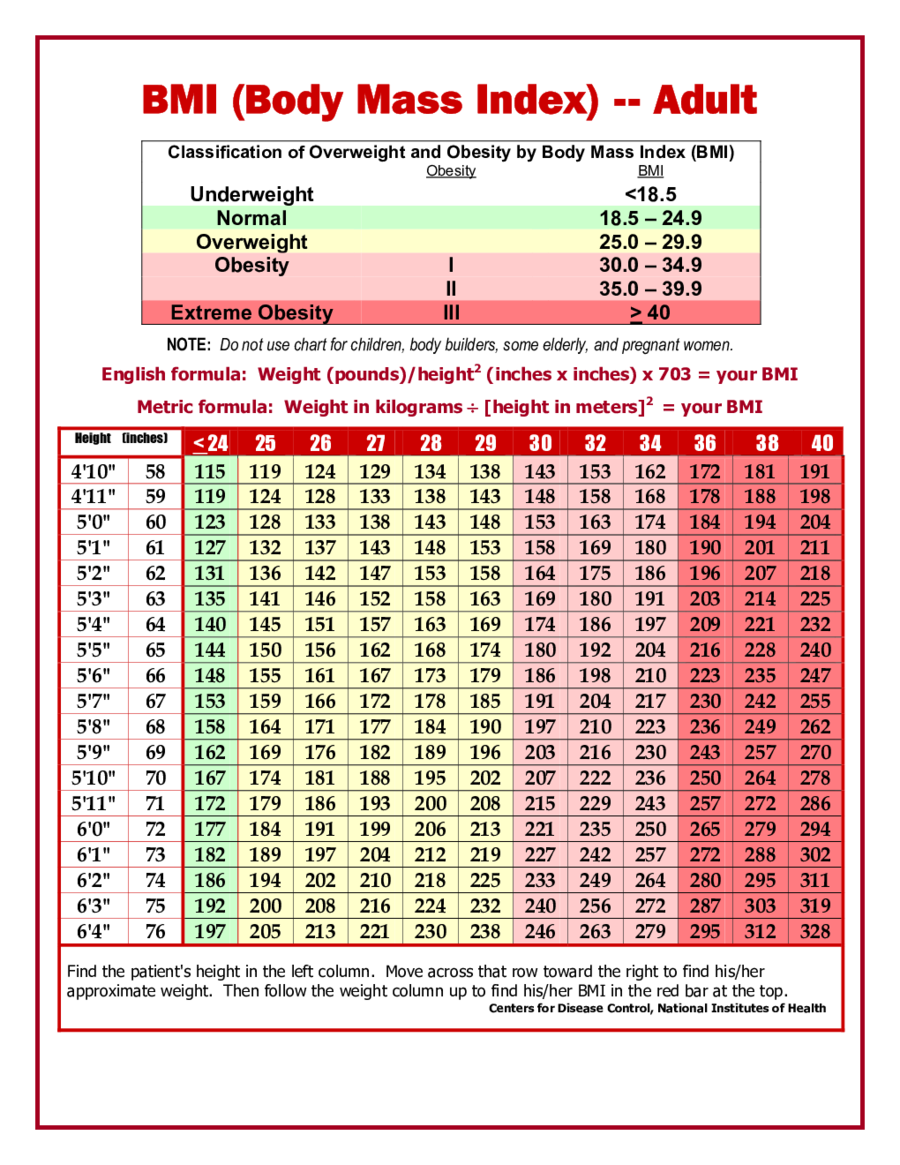

As per WHO is normal BMI is 18.5-25, which follows the same in different countrues. Percentile (%ile)īMI for country-specific people like in America, India, etc.īMI range differs significantly by ethnicity throughout the world as ethnicity differs in different countries. Table shows below the category based on percentile.The CDC charts are different for boys and girls. The healthy BMI range considered 18.5-24.9 kg/m 2 BMIīMI category for children and teens age 2 to 20 years:According to the CDC or Centers for Disease Control, a Prevention category considered percentile calculated base on BMI and age, and sex. WHO’s categories for adults Men and women:The World Health Organisation recommended the following categories for BMI. Besides the Ponderal Index (PI) methods used similar to BMI.īMI=703 x Body mass(lbs) / height(in) 2 Categories based on BMI for Women, Men, Children, and Teens. To calculate BMI in SI units the body mass considered in Kilogram and height in miter and in the USC system body mass is considered in pounds and height in inches.
BMI CALCULATOR FOR MEN WITH AGE DOWNLOAD
To download the BMI CDC chart click the link below.Ī simple general method or formula used to determine the BMI of a person is to divide body mass by square of height. Children’s health status defined with percentile, calculated with age, gender, height, and weight-based on CDC guides line.īMI CDC (Centres for Disease Control and Prevention) Chart for boys and girls according to BMI-age percentile growth given below. The methods and measurement procedures are different for children between the age of 2-20 years of age. Similarly, older people tend to have more fat than younger and athletes have less fat than non-athletes. So the level of body fitness may differ for the same BMI for men and women.

In general, with the same BMI as men and women, women tend to have more fat than men. BMI for women or men:Īdult women with more then 20 years of age considered normal if BMI falls between 18.5 – 24.9 kg/m 2for all body types and ages. Other health indicators also used along with the BMI. Differences in body type and distribution of bone, muscle, and fat can not define BMI as the only method to determine the health status. It is an estimation that is not considered body composition. This indicator widely uses to measure body health but it also has limitations.

The unit of BMI is Kg/m 2, where kg for body mass in kilogram and height in meter (m).īMI indicator used to determine the underweight, normal weight, overweight, or obesity of a person. The body mass divided by the square of body height is indicated Body Mass Index or BMI. The value calculated from the body mass or weight and height of a person. So unless you know you have an extremely low body fat percentage, chances are that if you have a high BMI, you probably are overweight.BMI or Body Mass Index is an index that indicates human health based on the height and weight of the body. It’s not perfect by any means, and won’t be accurate for many groups of people (athletes, people with eating disorders, elderly people who may have lost muscle but retained excess fat).īut what it does have going for it is that it’s easy to use, freely available and doesn’t require costly equipment. You can read more about the limitations of BMI here.įor the general population, BMI remains one of the easiest tools for assessing a person’s body mass. For example, some athletes who have a high amount of muscle mass but a low body fat percentage end up with a high BMI, placing them in the ‘overweight’ or ‘obese’ category according to BMI calculations, when they’re anything but. This is because it cannot distinguish between muscle weight and fat weight. You might have heard that BMI is inaccurate, outdated or unreliable as a measuring tool. It is tricky to accurately measure bodies, as everyone is different and no two people are built the same.


 0 kommentar(er)
0 kommentar(er)
